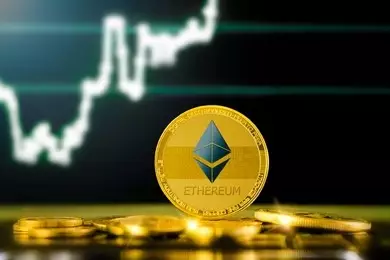Ethereum (ETH) recently underwent a significant software upgrade known as Dencun. This update is specifically aimed at improving the efficiency and cost-effectiveness of Layer 2 (L2) networks that are interconnected with Ethereum, such as Arbitrum, Polygon, and Coinbase’s Base. The primary focus of the Dencun upgrade is to reduce transaction costs on these networks, making it more affordable for users to interact with the Ethereum ecosystem.
One of the most notable outcomes of the Dencun upgrade is the substantial decrease in transaction fees on Layer 2 networks. Previously, users would have to pay dollars for transactions, but with this upgrade, fees have dropped to cents or even fractions of a cent. This cost-saving measure is expected to have a profound impact on the development of new applications and services within the Ethereum network, as it significantly lowers the barrier to entry for users.
The Dencun upgrade introduces a new data storage system that deviates from the traditional method of storing Layer 2 data on the Ethereum mainnet itself. By utilizing a new “blobs” repository, the upgrade reduces data storage costs by only warehousing information for a limited period of about 18 days, as opposed to storing it indefinitely. This change is expected to have a positive effect on decentralized exchanges (DEXs) and overall gas costs on popular Layer 2 networks like Arbitrum, Optimism, and Coinbase’s Base.
The reduction in gas costs brought about by the Dencun upgrade is particularly beneficial for decentralized exchanges operating on Layer 2 networks. For example, the projected gas costs for swaps on networks like Arbitrum, Optimism, and Coinbase’s Base are set to decrease significantly. These savings translate into a substantial reduction in fees for users, making transactions more affordable and encouraging greater adoption of decentralized exchange platforms.
The successful launch of the Dencun upgrade on the Ethereum mainnet marks a significant milestone in the evolution of the network. The complexity of this fork, as noted by Ethereum Foundation core developer Tim Beiko, underscores the collaborative effort of multiple teams to bring about these changes. Moving forward, Layer 2 network Arbitrum provides insights into the upgrade process, detailing the timeline for the implementation of new pricing changes and fee reductions for users. The ongoing development of ArbOS Atlas further reinforces the commitment to enhancing the efficiency and affordability of Layer 2 networks connected to Ethereum.
Despite the positive implications of the Dencun upgrade for Layer 2 networks, the price of ETH has remained relatively stable, trading below the $4,000 threshold. While the token has made significant gains over the past few weeks, reaching a 60% increase over the past thirty days, it has yet to break through key resistance levels. However, the introduction of the Dencun upgrade is expected to drive increased demand for ETH, potentially signaling a renewed uptrend that could propel the token towards its previous all-time high.
The Dencun upgrade represents a major step forward in enhancing the efficiency, affordability, and scalability of Layer 2 networks connected to Ethereum. By reducing transaction costs, improving data storage methods, and optimizing gas fees, this upgrade paves the way for increased adoption and innovation within the Ethereum ecosystem. As the network continues to evolve, it is essential for users and developers to stay informed about these changes and actively contribute to the growth of decentralized finance on the Ethereum platform.


Leave a Reply